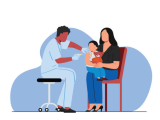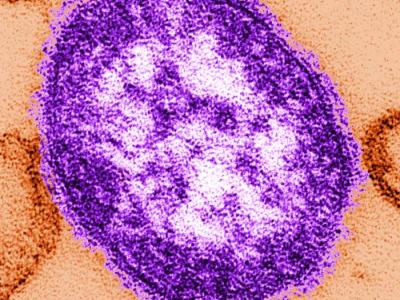May 8, 2009 (CIDRAP News) – As state public health laboratories tackle their novel H1N1 influenza (swine flu) testing backlogs, the Centers for Disease Control and Prevention (CDC) said yesterday it expects to see rising case numbers across the nation along with cutbacks in the number of samples tested by states.
With limited resources, some states are placing a priority on testing hospitalized patients, which may create a false impression that the virus is becoming more lethal, Richard Besser, MD, the CDC's acting director, said at a media briefing yesterday.
However, he added that scaled-back testing is also in line with how public health officials handle testing for seasonal influenza. Given that the swine flu outbreak seems to resemble seasonal flu, expect the CDC to revise some of its recommendations and change some of its reporting practices, he said.
As the disease becomes more widespread, tallies of individual cases won't be as meaningful, but health authorities will want to know what regions of the country are affected and to what extent, Besser said. For reporting on the swine flu outbreak, the CDC will likely use the surveillance and reporting model it uses for seasonal flu.
Minnesota is among states that have announced a cutback in influenza testing. In a May 4 press release, the Minnesota Department of Health (MDH) said it was asking healthcare providers to submit lab specimens only when a patient has been hospitalized for flu-like like symptoms. It will also continue to accept specimens from the state's 29 sentinel influenza surveillance sites and for ill healthcare workers.
Ruth Lynfield, MD, Minnesota's state epidemiologist, said in the press release that because of the surveillance change, information about new cases should be interpreted carefully.
"Because we are only looking for severe cases of the illness right now, it may tend to create the impression that the disease is becoming more virulent," she said, adding that the change may also generate smaller numbers of reported cases.
Labs cope with testing backlog
The CDC is receiving 300 to 400 specimens a day and is able to turn results around in about 24 hours, Besser told reporters today at a media conference.
The Association of Public Health Laboratories (APHL) said in a May 5 press release that one jurisdiction had a backlog of 3,500 specimens, with 1,000 coming in daily, but was able to test only 200 a day. However, public health laboratories have anticipated a surge and have developed response plans and formed networks to assist each other, the APHL said.
In August 2008 the APHL and the CDC conducted a pandemic influenza exercise to identify gaps in their response plans.
During the swine flu outbreak, the APHL and CDC have held daily conference calls with public health laboratories to provide updates and technical assistance, the APHL said.
Many public health labs still communicate results via fax, the APHL said, adding that it and the CDC are working with states to develop standardized electronic reporting.
"Much work remains to be done on this project, but the future payout means that public health laboratories should be even better prepared for the next 'when,' no matter what it might be," the APHL said.
States take on case confirmations
The CDC developed a novel H1N1 diagnostic kit—designed to help states confirm their own cases—in just 10 days and has deployed it to more than 60 state and local public health laboratories, the APHL said.
Besser has noted that states must go through a validation step, sending five test runs to the CDC, before they can start doing their own case confirmations. At today's press conference he said 10 states are now able to perform their own testing.
The CDC has already provided test kits to 78 countries and has received requests from 131 more, Besser said yesterday.
See also:
May 5 APHL press release


















